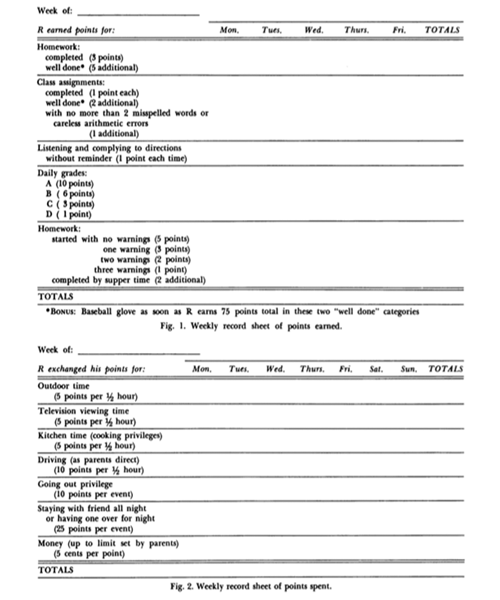One of the tenets of ABA is to provide evidence-based practice. The best way to help us do this is to keep up with the literature! Each month, Sam Blanco, PhD, LBA, BCBA will select one journal article and provide discussion questions for professionals working within the ABA community. The following week another ABA professional will respond to Sam’s questions and provide further insight and a different perspective on the piece.
This month’s response comes from Robyn Catagnus, EdD, LBS, BCBA-D and Elizabeth Hughes Fong, M.A., BCBA, LBS. Sam’s original blog can be seen here.
- How does Skinner’s definition of culture differ from how you typically consider culture?
Fong: I think that Skinner did a nice job of linking a person’s actions and beliefs within the context of their environment. At times, I feel it’s an oversimplification of a term, and behavior analysts should explore (on a deeper level) what that means. It defines culture, but lacks in helping us to understand it, or on a more practical level, what this means for our practice of ABA. I’m in agreement that our histories and the contingencies that we come into contact with shape who we are. But as clinicians, what does this mean? When I think of culture, I consider things like history, contingencies and the environment in which the person operates, but I also try to draw out more information about what this means for my work as a clinician – if at all. Culture is deep and rich, and sometimes I feel that relying on just Skinner’s definition doesn’t take all this into consideration. We can take that as a starting point, on how to conceptualize culture, but we need to go further into truly trying to understand what it is. Some interesting articles to review on the topic are: Muchon de Melo, C., & de Rose, J. C. (2013). The concept of culture in skinnerian Radical Behaviorism: Debates and controversies. European Journal of Behavior Analysis, 14(2), 321-328; Glenn, S. S. (2004). Individual behavior, culture, and social change. The Behavior Analyst, 27(2), 133-151.
- Have you encountered situations in which by cultural contingencies impacted an intervention you planned? What might you have done differently if you could go back in time?
Catagnus: I’d like to share the
story of two of my colleagues, Stacee Leatherman and Ashley Knochel. They are
both doing really important work in this area that exemplifies this issue. And,
you’ll likely see their papers on the topics published soon, so this will be a
preview. Stacee was a therapist working with a family from a different country
that had immigrated to her local area. She reported at a recent ABAI conference
event that she felt ill-prepared by her behavior analytic training to
adequately assess and intervene in a culturally appropriate way. The family
ultimately left ABA services, and Stacee went to the literature to see what
their consulting group could have done to better serve the family. She found
almost no relevant empirical research in ABA journals that addressed
implementation or culturally adapted interventions with non-Western families of
children with Autism. We recently submitted a manuscript presenting her
findings and making some recommendations of our own.
Leatherman, S., Catagnus, R.
M., Brown, T. W., Moore, J., Torres, I. (2019). A systematic review of
strategies to improve treatment services provided by cross-cultural
practitioners working with individuals with autism spectrum disorder.
(Manuscript in preparation).
Ashlee, along with
co-researchers, has conducted one of the rare empirical studies of ABA with
non-Western learners (and is submitting this manuscript soon). She was working
in Ghana at a school for children with ASD. She helped the teachers implement a
common behavior analytic technique, behavior specific praise. She did so in a
way that is typical here in her culture in the US, in terms of using language
to label the behavior, specifically, vocally, and with excitement. For cultural
reasons, the way she’d learned to conduct the procedure in her culture caused a
decrease in the desired behavior of working on task! So, she met with the
stakeholders in the setting, engaged in culturally sensitive and humble
question asking, and was able to collaboratively identify why the commonly used
approach was not culturally appropriate or helpful – why it was detrimental to
learning. Together, they revised the way the reinforcement was delivered,
assured it was culturally correct, and the on-task behavior improved, and the
staff reported feeling that Ashley’s interactions were culturally relevant. The
outcome, and consultation process, was impactful. This is some of the first
empirical data I’ve seen to explain how ABA interventions repeated ‘the way we learned to do them in our own
culture’ can negatively impact those we service if we don’t approach the
planning and implementation in a culturally interactive and open way.
Knochel, A., Blair, K. C.,
Sofarelli, R. (2019). Culturally focused classroom staff training to increase
praise for Ghanaian students with autism spectrum disorders. (Manuscript in
preparation).
- Do you currently engage in any of the suggestions the authors provide for self-reflection? What has been your experience with self-reflection?
Catagnus: I regularly engage in self-reflection in the forms of mindfulness practice and formal meditation. In fact, I developed a mindfulness and ABA course at TCSPP and get to regularly talk about this with our students. I think and talk about my own cultural frameworks and background regularly, too, because of the types of research and implementation we conduct for culturally relevant pedagogy at the University. Luckily, the work that I do is immersive in terms of cultural topics, and I continue to develop my self-awareness. I also seek out experiences of diversity, by traveling, engaging in study abroad programs for myself and creating them for my students. I’ve worked with amazing local early educators in South Africa, visited cultural and academic sites in Denmark, taken classes in Spain, and am about to do visit Singapore, Malaysia, Vietnam, and Qatar. Developing relationships with people around the world has helped me stay reflective and to grow personally and professionally. Learning never stops for this process.
- Do your current functional assessments incorporate cultural variables? If not, what can you change to improve your functional assessment process?
Fong:
I do not think most FAs incorporate cultural variables. While the principles of
ABA might be considered to be universal, the way in which we complete an FA is
very Eurocentric. Most of the places I
have worked at present the FAI in English and if another language is required a
translator is used. The translator may or may not have the clinical
understanding to accurately communicate the question. Also, some of the
questions are more direct, closed ended.
Some culture may do better by telling a story. Generally, there are no
questions that directly address culture – for example, preference on pronouns,
holidays, languages used, the role of the clinician in the family’s mind,
background information about caretakers, what behaviors are reinforced/valued
by a culture and which are not, etc. I
think incorporating things like this, into FAs would help to make them more
culturally sensitive. Maybe each culture, create their own? I will ask clients
if there is thing anything else that they feel that I should know, which might
be relevant to intervention. Sometimes I prompt for information about language,
holidays, manners, norms, preferences, etc. A good article on the topic is: Tanaka-Matsumi, J., Seiden, D. Y., & Lam, K. N. (1996).
The Culturally Informed Functional Assessment (CIFA) Interview: A strategy for
cross-cultural behavioral practice. Cognitive and Behavioral Practice, 3(2),
215-233.
- One of the recommendations by the authors is to use readily available resources. What resources are available to you? How can your organization better provide resources to help behavior analysts address cultural variables?
Fong: I like this family therapy book – McGoldrick, M., Giordano, J., & Garcia-Preto, N. (Eds.). (2005). Ethnicity and family therapy. Guilford Press. The Special Interest Groups (SIG) of ABAI are another good resource, I’ve found that people are responsive if you email them questions. There is also the Culture and Diversity SIG of ABAI. I also tend to look outside the ABA, to fields such as psychology, who have done a superior job addressing the need to examine the role that culture plays in treatment. Recently, there has been an increase in behavior analytic articles and presentations addressing culture, so I try to read those.
Catagnus: TCSPP has an institutional learning outcome related to diversity, so we embed learning, resources, assignments and outcome measures throughout our program. It is a deeply held value and a strong focus of our program. For this reason, our students often research topics related to culture, diversity, and inclusion. They have access to carefully curated curricular materials like articles, books, lectures, and tutorials on many different related topics. Our classes are regularly evaluated and updated to represent more global perspectives. And, the process of students’ learning is supported from the day they start until graduation, with the goal of developing their own resources and skills in cultural awareness. We are also implementing some innovative advising and learning laboratory programs to further help students connect with personal resources for cultural competence.
- The authors suggest the use of social validity surveys as one method for addressing cultural values. How can you incorporate this into your current practice?
Fong: I think, by just asking a client/family member/guardian if they agree with the goals and treatment suggestions would be a good start. Incorporating more relevant people into intervention planning would also be a good step. I tend to get better participation in data collection when I do this, as well (i.e. buy-in).
Catagnus: Bobbie Gallagher and a few of us from TCSPP recently published a paper that addressed the cultural values of females with limited language (LL) and autism (ASD), and their families and nurses. The study was designed to gather social validity about what strategies would be doable, preferable, and acceptable to communicate with women with LL and ASD during a gynecological exam. These women are at risk because, statistically, they don’t access this important health service very often, if at all. The study gathered quantitative and qualitative data about concerns, fears, and preferences for how women could be more effectively and respectfully involved in the process of a diagnostic exam. As Bobbie wrote, “Identifying strategies with a higher rate of social validity, or acceptance of treatment prior to implementation, may assist future researchers in conducting studies on the effectiveness of those strategies.”
Gallagher, B.J., Flynn, S.D.,
Catagnus, R.M., Griffith, A. (2019). Social validity of strategies to assist
females with ASD during gynecological examinations. Journal of Developmental and Physical Disabilities.
https://doi.org/10.1007/s10882-018-9654-5
- The authors state that one limitation of their article is that they did not provide systematic guidelines for working with culturally diverse clients. If you were going to introduce such guidelines, what might you include?
Fong: I think the guidelines I referenced here: Hughes Fong, E., & Tanaka, S. (2013). Multicultural Alliance of Behavior Analysis Standards for Cultural Competence in Behavior Analysis. The International Journal of Behavioral Consultation and Therapy. 8(2): 17-19. Are a good start. APA did a fantastic job on their guidelines – so again looking at other fields to see what they have done (https://www.apa.org/about/policy/multicultural-guidelines) and learning from other fields would be helpful.
Catagnus: Ashely Knochel, Kwang-Sun Blair, Stacee Leatherman, and I are working on a manuscript now related to this topic. We hope to provide the ABA community with a systematic review of relevant cultural adaptation models, highlighting one that is most useful as a framework to guide the process. We recommend that ABA look to other fields that have created and researched frameworks or developed guidelines. Examples include Guidelines for Providers of Psychological Services to Ethnic, Linguistic, and Culturally Diverse Populations from the APA, and AMA Code of Medical Ethics’ Opinion on Cultural Sensitivity and Ethnic Disparities in Care.
About The Authors
Dr. Robyn Catagnus is an expert on learning and behavior change. A board-certified behavior analyst, she is an associate professor, associate chair, and former national chair of Behavior Analysis at The Chicago School of Professional Psychology. She’s owned and operated a successful behavior consulting firm and held executive roles in behavioral health and educational technology organizations. As a management consultant and researcher, she also develops human capital initiatives to improve organizational behavior.
Dr. Catagnus’ helps educators promote inclusion, success, performance, and growth. She is a trustee of the Cambridge Center for Behavioral Studies; reviewer for the Diversity in Behavior Analysis section of the APA journal Behavior Analysis: Research and Practice; reviewer for Behavior Analysis in Practice, and former member of the editorial board for Perspectives on Behavior Science. Dr. Catagnus has degrees in instruction and technology, education, leadership and strategy, and a certificate in mindfulness.
Ms. Hughes Fong has over two decades of experience in the fields of behavioral health, education, and management. Her educational background is in clinical and counseling psychology and applied behavior analysis. She is currently a PhD candidate studying Clinical Psychology with a concentration in Forensic Psychology.
In 2011, Ms. Hughes Fong founded Multicultural Alliance of Behavior Analysts (MultiABA), now call the Diversity and Culture SIG. This is a special interest group of the Association of Behavior Analysis International (ABAI). Ms. Hughes Fong is the founder of “Diversity in Behavior Analysis” a section in Behavior Analysis Research and Practice, and serves as an Associate Editor for the journal. Ms. Hughes Fong, also serves on the Executive Committee for the American Psychological Association’s (APA) Division 35, as the Website Coordinator. She has been a reviewer for Behavior Analysis: Research and Practice, Behavior Analysis in Practice, and the National Multicultural Conference and Summit. She is also a “Distinguished Scholar” with the Cambridge Center for Behavioral Studies, and a member Association for Behavior Analysis International (ABAI) Diversity, Respect, and Inclusion Task Force
In addition, to Ms. Hughes Fong activities, she is a Board-Certified Behavior Analyst and licensed as a Behavior Specialist in Pennsylvania, a trainer in the Pennsylvania Bureau of Autism’s Functional Behavior Analysis training, and has received training certificates in the area of Trauma-Focused Cognitive Behavior Therapy and Trauma-Focused Cognitive Behavior Therapy Childhood Traumatic Grief. In addition, she received her level one certification in Pivotal Response Training and Gottman Couples Therapy. Her primary areas of interest are in the application of ABA to multicultural populations, telehealth, social validity, health and behavior analysis, and examining child custody and parental competency when a child has developmental disabilities.





